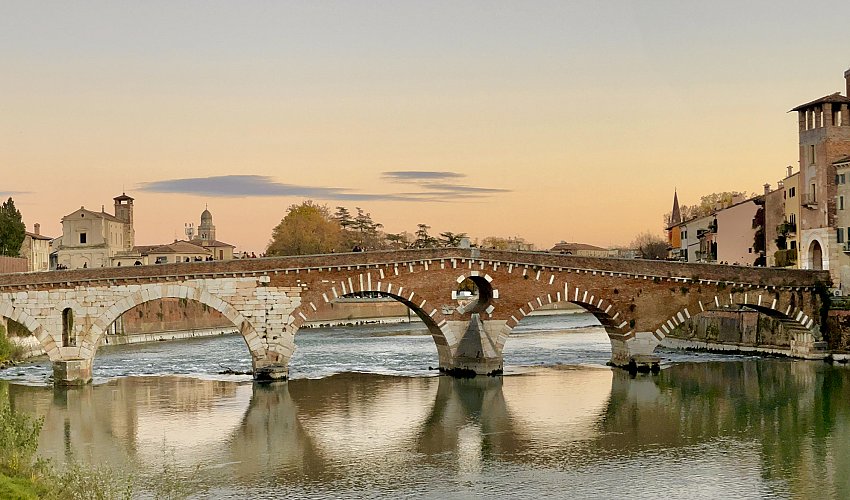Ponte Pietra

In Verona, a city of art and history, you can find Ponte Pietra, a fascinating bridge rich in history and beauty, crossing the bend of the Adige River that encloses the historic center of the city at its northernmost point, towards San Pietro Hill.
Its architecture is an extraordinary example of ancient design and exudes a majestic appearance. The bridge is composed of five arches, each with a classic semicircular shape. These arches are supported by massive stone pillars, conveying a sense of strength and durability. The bridge features a central overflow hole that serves as a release for floodwaters during high water levels.
The Ponte Pietra has a history dating back to Roman times, bearing witness to the glorious past of this city. Built in stone, as the name suggests, the bridge has undergone several renovations over the centuries due to damage caused by various floods.
In particular, the Ponte Pietra suffered significant damage at the end of World War II in 1945 when retreating German soldiers mined and detonated it. This explosion left only the arch facing the city intact.
These damages represented a significant blow to the historical heritage of Verona, but also a starting point for its future restoration.
After the war, efforts were made to reconstruct Ponte Pietra. It was a challenging project, involving engineers, technicians, archaeologists, and art historians who worked to restore the bridge to its former glory, with a focus on preserving its historical appearance, reusing as much of the original material recovered from the riverbed as possible.
The end result is a Ponte Pietra that closely resembles the original, allowing today's visitors to admire a structure that represents both the millennia-old history of Verona and the city's resilience in its post-war reconstruction process.
For the full article: agriturismo.life






